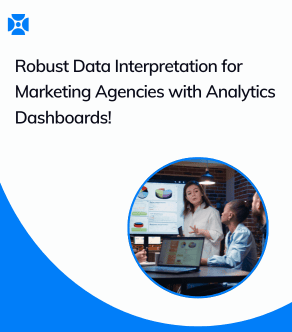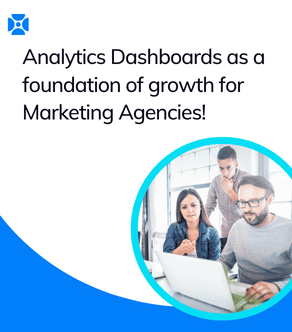
In today’s data-driven world, the ability to harness and utilize information effectively is a critical differentiation for businesses. However, the presence of data silos—isolated data repositories accessible only to certain departments—can severely hinder an organization’s ability to make informed decisions. On the other hand, a Single Source of Truth (SSOT) analytics dashboard integrates data from various sources into one unified view, enabling businesses to make data-driven decisions more efficiently.
There are very visible and numerous examples where marketing agencies with impaired analytics dashboards failed to make impact with their clients, which validate with significant data that organizations struggle and are even put out of business if they continue to not structure their data in a complete and comprehensive manner, align Single Source of Truth Analytics Dashboards for their business and on-board their teams to that eco-system. This article will explore the implications of data silos, the benefits and challenges of implementing an a Single Source of Truth analytics dashboard, and how businesses can transition from fragmented data systems to a unified data environment. We will also discuss real-world scenarios, pros and cons, and data citations to provide a comprehensive view of the subject.
1. Understanding Data Silos: What Are They and Why Do They Occur?
Impact of Data Silos:
According to research by McKinsey, organizations with data silos are 20% less likely to make timely and effective decisions, which can lead to significant financial losses annually. The following diagram from that same study elaborates on that.
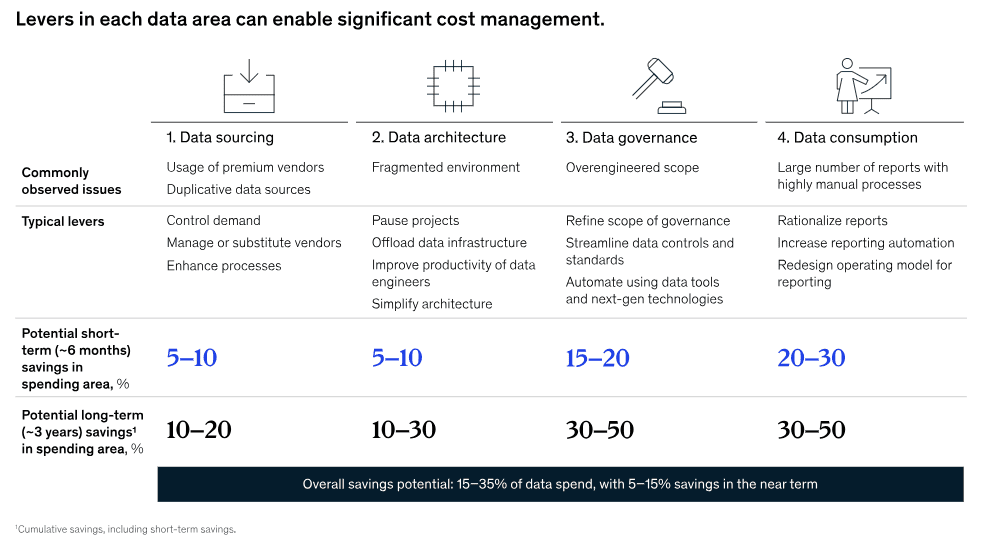
2. The Power of a Single Source of Truth (SSOT) Analytics Dashboard:
An SSOT refers to a centralized data repository where all organizational data is stored, processed, and accessed through a single platform. This unified approach ensures that every department and team is working with the same set of data, thereby reducing inconsistencies and enhancing collaboration.
Benefits of SSOT Analytics Dashboard:
- Unified View of Data: Provides a holistic view of data across the entire organization, enabling better decision-making.
- Enhanced Collaboration: Breaks down departmental barriers by providing a common data source that all teams can access.
- Increased Data Accuracy: Reduces errors and discrepancies in data, leading to more reliable insights.
- Operational Efficiency: Streamlines processes by reducing the time spent on data reconciliation and report generation.
- Improved Compliance: Centralized data management ensures better adherence to regulatory requirements and data security standards.
3. The Consequences of Ignoring Data Silos:
3. The Consequences of Ignoring Data Silos:
Inconsistent Reporting:
When data is siloed, different departments may produce reports that present conflicting insights, leading to confusion and misalignment in organizational strategies.
Delayed Decision-Making:
Siloed data requires more time to be consolidated and analyzed, delaying critical business decisions and causing missed opportunities.
Increased Operational Costs:
The maintenance of multiple, unconnected systems can lead to increased costs, both in terms of software management and the inefficiencies caused by fragmented data.
Poor Customer Experience:
A lack of integrated data can prevent businesses from gaining a comprehensive view of their customers, leading to disjointed customer interactions and reduced satisfaction.
Missed Strategic Opportunities:
Without a unified view of data, businesses may fail to identify key trends and insights, resulting in missed opportunities for growth and competitive advantage.
Deloitte reports that marketing agencies need to focus on data as a key component of their primary operations. Organizations with siloed data are 30% more likely to experience operational inefficiencies and a 20% higher risk of missing critical market opportunities. The following charts from that study further reflects at that.
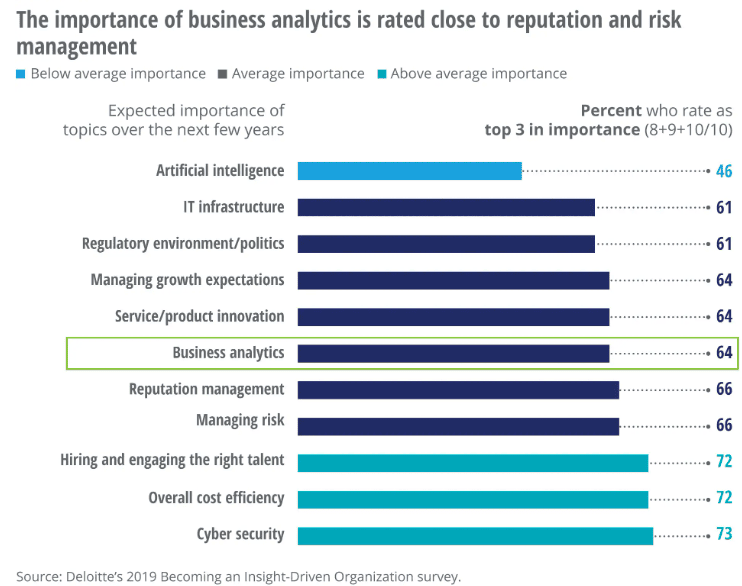
The same study by Deloitte also reflects at organizational adaption towards Single Source of Truth Analytics Dashboards and how organizations absorb analytics within their practices across their organizations. The following chart also further extends and reflects at that.
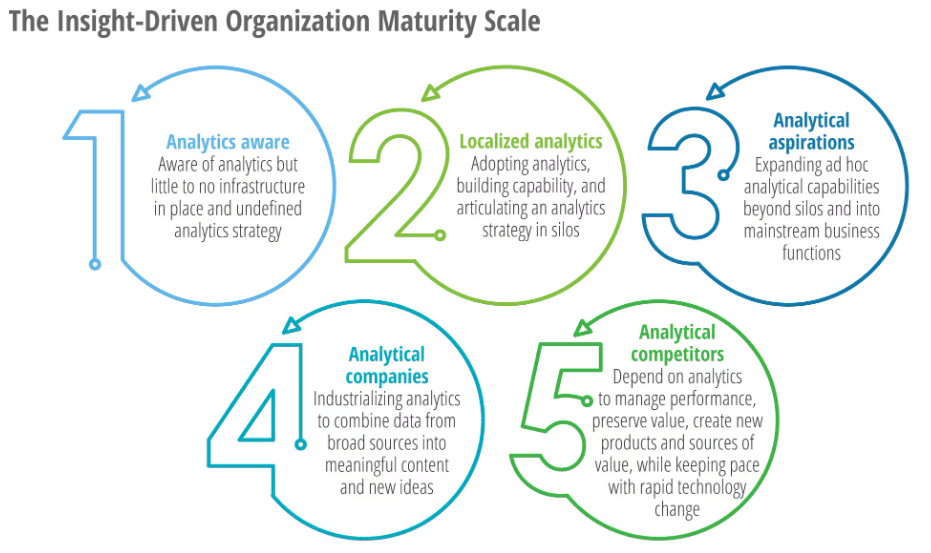
4. Overcoming Data Silos: Steps to Creating an Integrated Analytics Environment:
Step 1: Conduct a Data Audit
Identify all data sources across the organization and assess the extent of data silos. Understanding where and how data is stored is the first step in integrating it.
Step 2: Invest in Data Integration Tools
Modern data integration tools can connect disparate systems and consolidate data into a unified platform, making it accessible across departments.
Step 3: Foster a Culture of Collaboration
Encourage departments to share data and collaborate on projects. Breaking down cultural barriers is essential to eliminating data silos.
Step 4: Choose the Right SSOT Platform
Select an SSOT analytics dashboard that is scalable, user-friendly, and compatible with your existing systems. It should facilitate real-time data processing and support the needs of all departments.
Step 5: Ensure Data Quality and Governance
Establish robust data governance policies to maintain data accuracy and integrity. Regularly monitor and clean data to ensure it remains relevant and reliable.
Step 6: Train Employees on Data Literacy
Provide training on how to use the SSOT platform and interpret the data effectively. Data literacy is crucial for maximizing the benefits of a unified data environment.
5. Pros and Cons of Single Source of Truth (SSOT) Analytics Dashboards:

Scenario A: Success with SSOT
A healthcare provider integrated patient records, treatment data, and financial information into an SSOT analytics dashboard. This unified view enabled the organization to improve patient outcomes by 35%, reduce operational costs by 20%, and enhance compliance with healthcare regulations.
Scenario B: Struggles with Data Silos
A retail company operated with siloed data across its marketing, sales, and inventory management systems. The lack of integration led to inconsistent promotional strategies, overstocking of products, and missed sales opportunities. As a result, the company saw a 10% decline in revenue and a 15% increase in operational costs.
Scenario C: Partial Integration
A financial institution partially integrated its data, connecting only the customer service and sales departments. While this led to some improvements in customer satisfaction, the lack of integration with the finance department caused discrepancies in financial reporting and delayed strategic decisions.
Scenario D: Complete Integration
A tech company fully integrated its data across all departments into an SSOT platform. This complete integration resulted in a 50% improvement in time-to-market for new products, a 30% increase in sales, and a 25% reduction in operational costs due to streamlined processes.
6. The Future of Data Management: Moving Towards a Unified Data Ecosystem
The Rise of Data Fabric:
Data fabric is an emerging concept that provides a unified architecture for data management, enabling seamless access and integration across the enterprise. It extends the SSOT concept by incorporating AI and machine learning to enhance data processing and analytics.
AI-Driven Data Integration:
Artificial intelligence (AI) tools are increasingly being used to automate data integration, identify patterns, and provide real-time insights. These advancements will further enhance the capabilities of SSOT analytics dashboards.
Importance of Data Governance:
As organizations move towards a unified data ecosystem, strong data governance practices are essential to ensure data quality, security, and compliance. Clear policies and procedures will be critical in managing the complexities of a centralized data environment.
Tableau reports that organizations leveraging data fabric solutions are 3 times more likely to achieve a competitive edge through real-time insights and predictive analytics.
Erphub's comprehensive guide on Single Source of Truth Data Analytics Dashboards
Erphub has been enabling businesses across industries with comprehensive digital analytics and dashboard solutions. Our guide, free guide available through the link below, takes managers, business owners and organizations through visibility across key areas of business that benefit out of Single Source of Truth analytics dashboard solutions.





